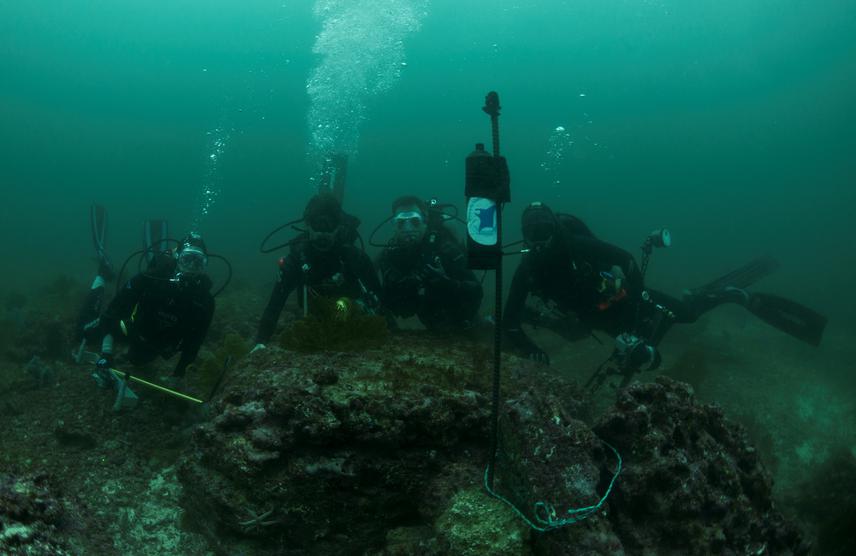Andrea Denise Marshall
Other projects
6 Oct 2014
Ray of Hope: Monitoring and Protecting the World’s Largest Gathering of Giant Mantas II
The largest identified population of Manta birostris has been discovered off Isla de la Plata in Ecuador. A carefully designed action plan will be drafted to categorize anthropogenic threats and provide recommendations to reduce negative impacts to this species

Our team and the first acoustic listening station deployed at Isla de la Plata.
The largest identified population of Manta birostris has been discovered off Isla de la Plata in Ecuador. This location represents the finest opportunity to study this threatened species in the wild and contribute to largely absent biological and ecological information. This student project will focus on capturing more information on the drivers behind the mass migration of thousands of giant manta rays to this region annually. Specifically we are trying to gain a greater understanding of the distribution of these rays along the coast, small-scale habitat use and their seasonal fidelity to aggregation sites within the Machalilla National Park.
In 2011, we established connectivity between the Machalilla National Park (mainland Ecuador) and the Galapagos Islands, a world heritage site located 900 km offshore. The connectivity of these two National Parks is of extreme importance to the management of this iconic species, which is one of the most valuable species to diving tourism in the world. Due to the migratory nature of this giant ray, increased effort to identify and manage their migratory routes as they travel between major aggregation areas has been identified as a future priority by the Ecuadorian Ministry of the Environment.
To compliment the other work currently underway, we are installing a small passive acoustic array around the Machalilla National Park where this species appears to spend about a third of the year. Photo-identification techniques enable detailed sighting records to be kept and compared over long time periods and large spatial scales but this methodology lacks the fine-scale temporal or spatial resolution that telemetry can offer behavioural studies. Introducing acoustic telemetry into our research program in Ecuador will allow us to examine specific habitat use by individual rays 24 hours a day even during poor weather conditions or at night. The strategic placement of listing stations will also allow us to examine how these giant rays use the inshore areas around Isla de la Plata on a seasonal basis.
Ultimately, by combining different techniques we will gain a clearer understanding of how and why this species is using this stretch of coastline annually. The goal is to use the information gleaned from this study to help develop a national management action plan for the species and to increase the effectiveness of patrols by the Machalilla National Park authorities during the manta ray season.